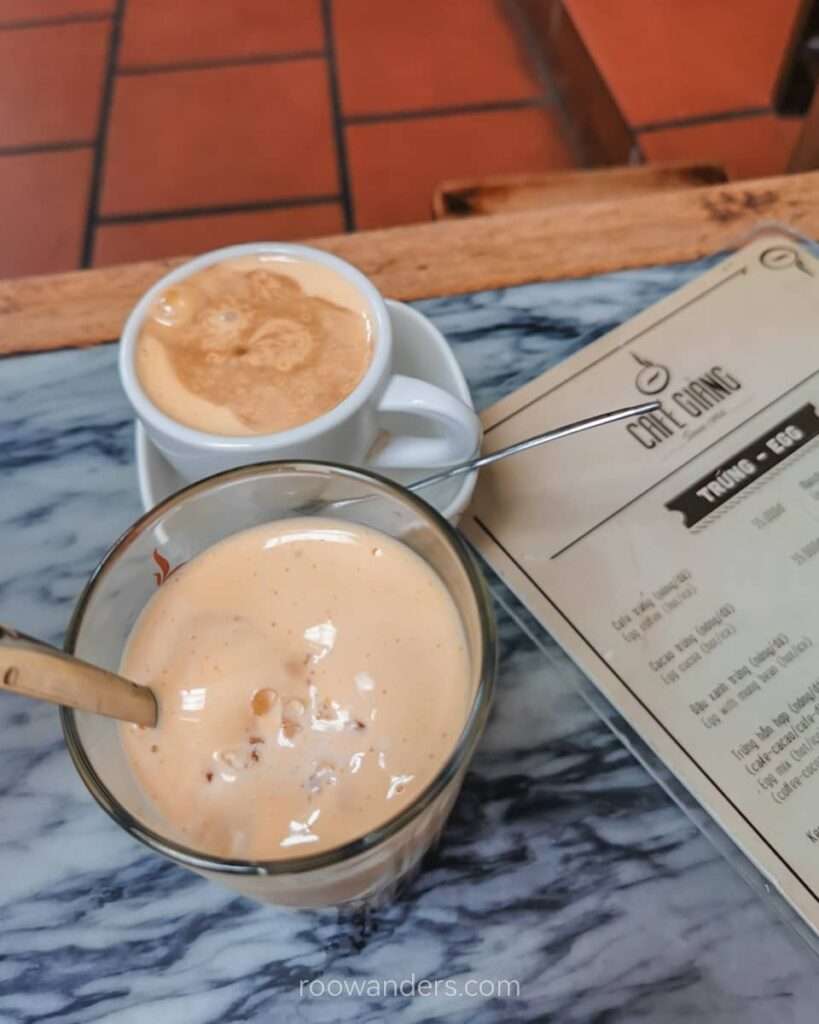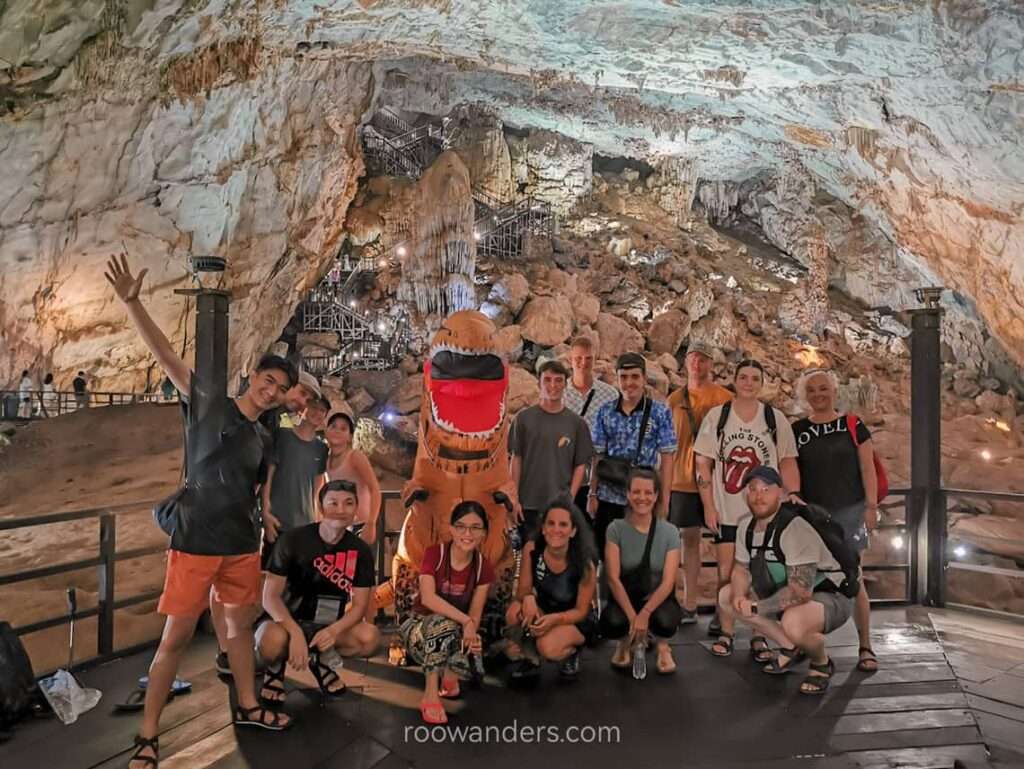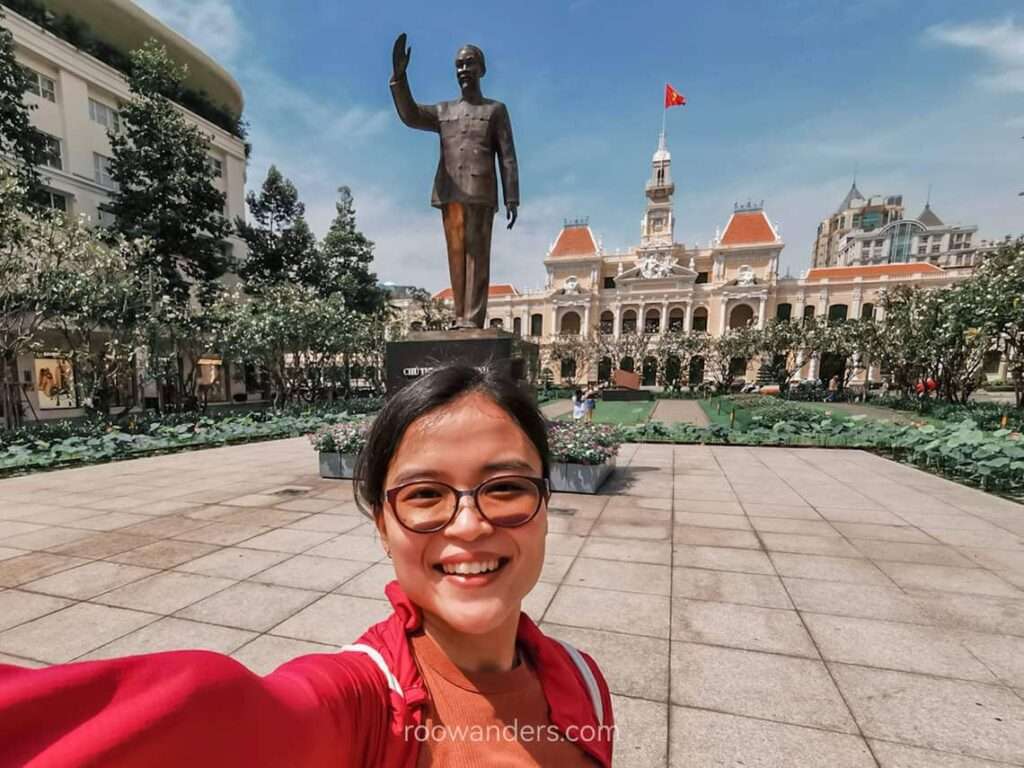
Hoi An: Vietnam Vibrant Ancient Coastal Town
Ending my 2-week trip in Vietnam with Hoi An, the little coastal town in central Vietnam, was an excellent decision.
Known for its ‘exceptionally well-preserved example of a Southeast Asian trading port’, Hoi An is a jewel of central Vietnam for housing a UNESCO World Heritage site.
That illustrative sentence didn’t strike a chord in me when I first read it. So what if it is well-preserved? Where’s the appeal to that?
But the moment I alighted from the bus from Hue, another ancient capital, to Hoi An, the winding streets amongst the old yellow shophouses, colourful shops within those same old shophouses, and the absence of heavy traffic due to the narrow streets intrigued me.
Seen those colourful bulbous cloth Vietnamese lanterns?
Hoi An comes alive with them when the sun sets! The sight of Hoi An street, especially Hoi An market, is so arresting!
Anyhoo, planning to head over to Hoi An? Here’s a post exploring the attractions and activities of the charming little ancient town of Hoi An.

I visited Hoi An in Aug 2023. This post contains affiliate links that cost nothing to you but support my blog! It may also be updated periodically. Cheers!
Brief Background of Hoi An
Hoi An began as a trading hub as early as the 15th century, welcoming guests and merchants from Southeast Asia, East Asia, and the rest of the world.
As the hub flourished, it absorbed influences from all places, thereby retaining bits and pieces of architectural designs from China, Japan and later, Europe. For instance, wooden Chinese shophouses, intricate temples, an ornate Japanese bridge with its pagoda, French colonial buildings, and Vietnamese tube houses.
As trade dwindled in this region in the 19th century, Hoi An was slowly abandoned as a hub, effectively leaving the houses as they are, in their old charms and wonders.
The little town was then elevated to a World Heritage site by UNESCO and slowly morphed into a tourist centre while still retaining its skeleton of old but beautiful houses.
Best Time to Visit Hoi An
Hoi An in Central Vietnam is best visited during the cool and dry season from February to April.
Then again, a temperature range of 20°C to 30°C might not be that cool if you’re from temperate countries. But for me from Singapore, anything less than 26°C is cool.
The rainy season begins from September to November, making it risky to travel in Central Vietnam due to heavy downpours and floods. Central Vietnam had one of the worst floods in years in October 2020.
May to August is summertime and can get extremely hot. I visited Hoi An in August. Travelling is still doable but be prepared to face a 35°C feeling like 40 °C baking hot sun. I became sick the next day from too much sun and heat exposure from my day trip to My Son.
December and January might still see rain from the dwindling wet season. But this is also the peak holiday season, and prices might soar.
February happens to be Hoi An’s Lantern Festival, so there may be more visitors during this period to celebrate the event. Also, take note of the Tet holiday, which is the Vietnamese New Year happening in January or February. Some shops may be closed or charge higher fees during this period.
Getting to Hoi An
Flight
Hoi An does not have an airport, but Da Nang, a city about an hour’s drive away or 30 km from Hoi An, has.
Aside from domestic flights from Hanoi and Ho Chi Minh City, Da Nang International Airport (DAD) supports flights from Taipei, Seoul, Bangkok, Kuala Lumpur and Singapore. I took a budget flight – Vietjet – from Da Nang to Singapore. Find your most affordable flights into Da Nang with Skyscanner.
Shuttle
It’s easy to travel to Hoi An from Da Nang Airport.
The most convenient way is to hail a ride from Grab, Gojek or Xanh SM at the airport and be dropped off wherever you want in Hoi An. Download the app and register an account beforehand to use their services.
But prices of the ride may fluctuate. You may also have to wait for the rides to arrive, and it can be a long while if there’s a jam outside. Alternatively, book a private shuttle to Hoi An for peace of mind, knowing they will arrive on time. This is especially useful for those travelling in a larger group, with elderly parents or young children.
Those looking to save money could look for a shared shuttle to Hoi An from Da Nang, which has a ride out almost every hour.
Train
There is no railway station in Hoi An. The closest train station is in Da Nang, which is at the top right corner of the airport.
Apply the same logic to travel from Da Nang to Hoi An via the shuttle from the train station.
I’ve taken a sleeper train in Vietnam from Hanoi to Dong Hoi to visit Phong Nha National Park and found the experience memorable. The sleeper train was clean, and the carriage was modern. Most importantly, this Hanoi to Ho Chi Minh City train route is rated as one of the best train rides in the world!
Consider taking the train if you’d like to enjoy the countryside views from your seat as you travel to Da Nang! Find your tickets at 12Go or BaoLau.

Bus
Unlike travelling by plane or train, buses go directly to Hoi An.
Prices are reasonable, and you may be surprised that some can be luxurious✨. Most big buses have inclined seats where you can lie down – especially comfortable when travelling long distances. Some even have privacy curtains!
But travelling by bus has its own danger, especially when travelling at night.
Book your bus tickets to Hoi An from 12Go or BaoLau.

Sightseeing Bus
The last option is unique. I took a sightseeing bus booked from my hotel in Hue (Soleil Boutique) to Hoi An and had an excellent road trip, stopping by some stops like the Hai Van Pass, and the Marble Mountains.
If you have time, consider going for this option by booking with your accommodation or from Klook. It saves you from another trip just to the Marble Mountains.

Travelling within Hoi An
Hoi An Ancient Town, where the attractions are compacted, is accessible by foot.
You could get around anywhere on foot, though a bicycle comes in handy and cuts down the time to travel.
Most accommodations provide bicycles for free. We took that to cycle to the Hoi An Memories Land Show.
Find a motorbike or scooter rental in Hoi An via Google Maps to travel beyond the ancient town to places like Bana Hills, My Son Sanctuary, or the Marble Mountains. Make sure you check their reviews! Rental for a motorbike or scooter starts from 150k dong per day. A bicycle should cost less than half of that.
Ride-hailing apps work in Hoi An.
Attractions & Activities
Map of Attractions
Explore Hoi An Ancient Town
The shophouses and iconic buildings left behind from its heyday as a trading port made Hoi An famous in the modern world.
Stroll through the cobbled streets and admire the view of Hoi An. Time travel as you imagine how life might have been when it was a bustling port.
Most attractions in Hoi An Ancient Town are free for visitors to wander into and snap a few photos as a keepsake.
However, there are around two dozen locations that are ticketed. Instead of buying a ticket for each, the board governing Hoi An Attractions have since devised a new system. Buying a 120k dong ticket allows you to visit 5 spots. You buy another if you’d like to see more.
Out of those two dozen heritage sites, only a select few are iconic and where most tours and itineraries talk about (links to their Google Map locations):
- The wooden Japanese Bridge that connects two-quarters of the ancient town houses a remarkable pagoda. Also known as Chùa Cầu Pagoda, it was built in the 1590s and is so vital to the Vietnamese that they printed it on the back of their blue 20k bank note.
- Chinese Assembly Halls like the striking pink Fujian (Phúc Kiến) Assembly Hall or Teochew (Trieu Chau) Assembly Hall. Both are richly decorated with intricate carvings, roof ornaments, and dragons.
- Visit the Hoi An Traditional Art Performance for its performance of traditional Vietnamese folk dance and music or the Hoi An Museum to learn about the history of the town port.
- Old houses such as the brilliant Tan Ky Ancient House, which has seen seven generations of the Le family, or the Cam Pho Communal House – the oldest communal house in Hoi An.
Sample some Vietnamese Coffee
I love the intense and rich taste of Vietnamese coffee! Of which, Cà phê muối or salted coffee is my favourite. I had my best salted coffee in the hotel I stayed at in Hue. The salt enhances the roasted notes and adds a nice body to the coffee. The egg coffee, or Cà phê trứng, which originated from Hanoi, is tasty, but too custardy and sweet to my liking.

Then there is also the iced coconut coffee, or Cà phê dừa – a refreshing drink on a hot afternoon.
Thus far, any random cafes or shops I’ve visited in Vietnam serve delicious coffee.
Want to learn to make delicious Vietnamese coffee? Check out this coffee-making course in Hoi An.
Indulge in Vietnamese Food
As with Vietnamese coffee, Vietnamese cuisine is delicious. Of all the Southeast Asian food I’m exposed to, including those I grew up with in Singapore, Vietnamese noms rank top!
I’m crazy about pho – especially Bún bò Huế, which originated from Hue, and Bánh mì! Funny how these two are the comfort foods I crave periodically in Singapore (I’ve found decent ones in SG to quell my craves!).

As with Hue for its Bún bò Huế, and Hanoi for its Chả Cá and Bún chả, Hoi An has two speciality dishes which originate from the ancient town – Cao Lau and Mi Quang. Both are versions of soupy noodles, which are my favourites!!

You can find them in the eateries peppered around Hoi An streets. Use Google Maps to find highly rated ones.
Alternatively, those short on time could follow a guided food tour on bicycles or a street food tour on foot.
Learn to cook Vietnamese Cuisine
Aside from eating, why not learn to whip out a Vietnamese meal while in Hoi An? You could then dish out your new skills when you’re home and impress your friends! Much better than physical souvenirs – don’t you think? 😆

Cooking workshops are also a great way to bond as couples, friends or a family, and you get to enjoy the fruits of your labour at the end of the day.
Most tours pair cooking workshops with cruising on a coconut basket and shopping for fresh ingredients at the local market.
Rent an Ao Dai
Having been to the temples of Bangkok, the heritage houses of Penang, and the streets of Jiufen, I can understand the appeal of renting traditional costumes in other countries.
You could buy souvenirs, but nothing can quite beat the memory of wearing a traditional costume that identifies as the heritage of the place you’re in and taking a photo in that place.
Makes for some beautiful shots to show as a brave solo traveller, fun moments to reminisce on with friends, or romantic shots as a loving couple in a Vietnamese setting.

Choose between renting an ao dai for a day or hiring a professional photographer and going on a photoshoot tour. I think the latter would make some cute budget pre-wedding or honeymoon shoots.
Have a Suit or Dress Tailored in 24 Hours
Fabric, especially silk, is a part of Hoi An’s history.
During the times of the Silk Road, Hoi An was involved in plenty of silk transactions. With that, it has its fleet of tailors and clothes makers to cater to the needs of affluent merchants and traders.
Nothing has changed since then. You can choose the fabrics that caught your eye and get your clothes custom-made in Hoi An. Some shops even advertise having your garment or bags ready within a day!
Want to go all out shopping for your fabrics? Shop around at the Hoi An Cloth Market. Be warned, the colours and stacks of fabrics can leave one with choice paralysis!
Marvel at the art of silk making at Hoi An Silk Village
The villages scattered across Quang Nam, where Hoi An resides, were once famed for their silk.
Silk weavers of Quang Nam were known for breeding silkworms that gave excellent cocoons – the raw materials of silk. Silk produced then by hand was remarked as quality goods fit for the royalties and were income-generator as exports to other countries from the port of Hoi An.
Learn more about silk making at the Silk Village of Hoi An. The venue is, strangely, located next to a premium hotel and resort bearing the same name. Nonetheless, it is a good half day out from Hoi An to experience the weaving process, from tending the silkworms to weaving a brocade.
Participate in the local morning market scene at Hoi An Market
Looking to experience the feel of a local market? Then hop over to Hoi An Market, also known as Chợ Hội An (links to location) with its iconic yellow walls, early in the morning to witness locals shopping for vegetables and meats to cook their meals.
Aside from fresh produce, wander through the maze of vendors to indulge in locally cooked food or order coffee beans or chilli jam to bring home and enjoy.
Bedazzled at Hoi An Night Market
Can’t get up early to spectate business at Hoi An Market? Then flock to the dazzling night market by the riverside of Hoi An.
When I landed in Hoi An at around 4 PM, the riverside looked pretty under the late afternoon sun with the yellow buildings and colourful unlit lanterns. Vendors were still setting up their stations for the evening and people were strolling around.
As I returned to the riverside looking for dinner in the evening, I was struck by how enchanted the place had become.
The bulbous lanterns in assorted colours and motifs and shophouses with uniform wooden shop boards give a Spirited Away vibes, like the shophouses of Jiufen and its red lanterns, but Vietnamese-style.

It was hot, crowded and sweaty that August evening. But that doesn’t take away the sense of busyness and appeal. Some may complain the night market is overly touristy, but I thought the crowd gave the place its charm. You need people to create a bustling sensation, like how ancient Hoi An would have been centuries ago.
There are many quirky shops selling trinkets to remind you of your vacation, like oriental folded fans, those bulbous lanterns, elephant or flower pants or shirts, utensils and lacquerware. It’s time to put your haggling skills to the test!
Some shops selling Vietnamese lanterns may double up as a strategic photo station with a seat in the middle for the subject being photographed and lights shining onto the person. The entrepreneurial boss charges a token, around 10k dong per person for photos.
Ride a boat at Hoai River
Besides strolling down the riverside and soaking in the festive feels of the night market, you could enjoy the sights and sounds from a different point – on a boat on the Hoai River!
Some commented that the lanterns, lights and the boat ride gave the vibes of the Disney movie Tangled.
I’m not sure how much it’ll cost to rent a boat and boatman yourself. You would have to haggle down the price as they will try to overcharge you.
Alternatively, sign up for a tour specifically for this, knowing that’s what you’re paying for.

Catch a show at Hoi An Memories Land
I thoroughly enjoyed myself at Hoi An Memories Land.
It’s an amusement park of lights with mini performances happening almost every 10 to 15 mins at different parts of the park in the evening, culminating in the star performance at the main stage at 8 PM.

The park is on an island which is divided into the Impression Theme Park, the main stage, and rows of resorts.
Hoi An Memories Show is one performance you should not miss. Featuring over 500 performers, this show cleverly uses lights, music, and dance to tell the history and folklore of Hoi An. What I love most is the line of graceful dancers in Ao Dai and Non La slowly drifting through the stage like a dream.

Since tickets include the theme park, which opens at 4 PM, give yourself enough time to explore and enjoy the park in the evenings before the grand show.
A food court, bar, and a couple of restaurants can be found on the island.
Visit Tra Que Vegetable Village
Get away from the city and immerse yourself in local farm life at Tra Que Vegetable Village. Learn the art and beauty of cultivating and harvesting nature’s produce from the fertile lands of Tra Que.
Choose between cycling to the farms and getting your hands dirty gardening, or picking up some cooking skills!
A trip to the farm makes for a fun getaway and a change in experience for all, especially families with young children.
Tra Que Village is about 4 km north of Hoi An Central, on an island below An Bang Beach. If you’re feeling adventurous on your bike, that island has quite several quirky places to tour around. Buy your tickets to Tra Que Vegetable Village online here.
Make some pottery at Thanh Ha Pottery Village
Boasting over 500 years of pottery tradition, Thanh Ha Pottery Village isn’t just an art form. It also carries with it Vietnamese culture and tradition.
Pottery forms the cups and bowls for daily use, intricate vases and pots as decoration at home, in the temples or the palaces, and quality goods as export for the people.
Aside from getting your hands busy moulding your cup or bowl, you could also tour the village and learn more about the history of Thanh Ha.
A relatively new museum called The Terracotta Park is located a short walk away from the Pottery Village. From the top, the museum looks like a potter’s wheel featuring sculptures and miniature buildings that make for a worthwhile visit while you’re around the vicinity.
Both places are about 5 km west of Hoi An. Choose to rent a motor, cycle or find a private shuttle there. You can get the tickets online here.
Note that both places are ticketed and open at 8.30 AM and close before 5 PM.
Stroll down the idyllic beaches
Hoi An has easy access to strips of sandy beaches for those looking forward to a sun-kissed getaway.
Those beaches mentioned below extend towards Da Nang, facing the East Vietnam Sea and Cham Island.
To me, it’s just a long slice of beach from the map. But to the people living there, that long slice is broken up into several beaches with names and fancy resorts.
The two closest beaches to Hoi An are Cua Dai and An Bang located about 7 km from Hoi An Central. An Bang is more popular and has more shops and eateries. Cua Dai, located about 10 minutes away, is quieter, giving a more relaxed and laid-back environment. But you may have some difficulties finding food or drinks.
Nonetheless, there’s no easy way to go to and fro those two beaches without your own motorbike or car. Getting there via Grab from Hoi An may be straightforward, but finding another Grab to bring you back is another story…
Why not spend a night in one of the resorts by the shoreline and enjoy the dazzling sunset from the shore of Vietnam before winding down the day with a nice cold beer and some sea breezes?
I didn’t have time to visit any beaches on the mainland but had the chance to lounge on the coast of Cham Island after diving (section below).

Board the Basket Boat
The fishermen of Hoi An source fish in the river and the tributary that open to the East Vietnam Sea just like any fishermen would, in boats for sustenance and their livelihood.
During French colonialism, heavy taxes were imposed on those who owned boats. This devastated the fishing community. As such, an ingenious group of Vietnamese fishermen designed a new boat called Thung Chai, or the basket boats, using bamboo. Some call it the coconut boat as it looks like opened coconut hulls, and for the lush coconut forest that used to be around the area.

Fortunately, the French didn’t see the basket as a boat, which led to the proliferation of the basket vessels that soon became a cultural heritage of Hoi An.
The boat rides have now taken on another role as a massive tourist attraction, moving on from its past role as a fishing boat. Boat tours now feature bobbing down the river like my experience in a day tour to the Mekong Delta from Ho Chi Minh City, perhaps with a few tricks from the boatmen like spinning in the boats or ‘fishing’ for crabs.
With that, you’d expect more unethical vendors looking to price gorge on unsuspecting customers.
Be cautious when booking with local operators or directly engaging with the vendors by the river! You’d need to learn how to haggle and reject paying excesses when they demand for one.
Or save yourself from the uncertainty by booking online – they treat reviews seriously, and no operators would want to risk that!
Relax with a massage or spa
End your day in Hoi An with a relaxing massage.
Spent the whole day walking? A foot massage sounds divine!
Heading home soon? Then you should go all out with a spa package!
There are several parlours scattered around Hoi An. But you’d need to check their reviews on Google Maps beforehand and reserve a slot in advance for popular ones! Services range from a 30-minute quick foot massage to 3 hours of body scrub and massage packages.
Ylang Ylang Spa Massage in Hoi An is one example that offers free round-trip transfers to and from your hotel.
Day Trips from Hoi An
Below are several day trips from Hoi An if you have more days to spare beyond the coastal town!
Visit My Son Sanctuary
My Son Sanctuary, pronounced as mi son, is a cluster of ancient tower-temple monuments erected between the 4th and 13th centuries by the Champa Kingdom.
The park is designated as a UNESCO site for conserving an ancient civilisation that contributed to the spiritual and cultural developments of later advancements in Southeast Asia.
Nestled within the towering green mountains, the temples worshipped Hindu gods, primarily Shiva.
Visiting My Son reminded me of my prior visits to Angkor Wat and Sambor Prei Kuk and later visits to some of the temples in Ayutthaya.
Aside from visiting the different temple monuments, the park has a daily performance of traditional Cham dance in an open hall.
My Son is about 40 km southeast of Hoi An Central. If you’re feeling adventurous, you could buy a ticket with an audio guide and ride a rented scooter to the place independently. Or a private chauffeur.
But having a guide to show you around the sanctuary makes the journey more worthwhile, at least to me! I went on a guided tour and found the money and time saved were well spent!

Snorkel or Dive at Cham Islands
Knowing that I’d be anticipating more outdoorsy activities in my Vietnam itinerary after hiking in the biggest cave in the world, I immediately signed up for a day of scuba diving on the collection of islands off the coast of Hoi An.
While Vietnam isn’t recognised as a place with good dive spots, diving in Cham Island came at a good time for me to refresh my diving skills – it’s advisable to do it once every 6 months and since I’m in Hoi An, why not?
My last dive was around Liuqiu Island. Xiao Liuqiu is off the coast of Kaohsiung, Taiwan. After diving in Cham Island, I went to Cebu and caught sight of thresher sharks!
Hence, of my two days in Hoi An, I dedicated a day to scuba diving and relaxing on the beaches of the Cham Islands.
The water may not be the clearest, but it’s still nice to check out the ubiquitous clown fish in its anemones and a few common fishes like the angelfish and parrot fish.


My tour included divers and snorkelers, and we visited Hon Dai North and South before winding up the tour and having lunch on the island.
Not a diver? You could still enjoy Cham Islands like I did via snorkelling or just relaxing on its beaches.
Cross the Golden Bridge at Ba Na Hills
Founded by French colonialists in 1919 as a retreat from the heat and humidity of sea-level Vietnam, Ba Na Hills has since been transformed into a tourist destination.
Managed by Sun World, Ba Na Hills features one of the world’s longest non-stop single track cable cars at 5801 m! That alone is enough for me to visit Ba Na Hills.
And, of course, the iconic Golden Hands landmark of Ba Na Hills that was added in 2018 to the existing hill resort.

The sight of two stone hands – it’s made of fibreglass and wire mesh – emerging from the mountains and cradling the golden bridge is so breathtaking that visitors from Da Nang and Hoi An flock to Ba Na Hills for the sole purpose of taking photos of the bridge.
That spells crowd.
If you’d like to steer clear from others, you could plan a night in the resort on the hill, or arrive as soon as the resort opens to be the first on the bridge or the last person to leave for that sunset shot.
The bridge may be the star attraction of Ba Na Hills but there are plenty of other attractions on the 1487 m theme park, including a replica of a French village, an indoor amusement park, castles, theme shows and eateries. There are also temples and pagodas on the other side of the park.
There are several combo ticket options for Ba Na Hills – the usual ticket with admission starting at 8 AM, top up with lunch buffet or Sun World’s shuttle bus, or a night ticket with dinner buffet and admission starting at 3 PM.
Ba Na Hills is 40 km northwest of Hoi An Central and 25 km from Da Nang Central.

Explore the Marble Mountains
Sandwiched between Da Nang and Hoi An, the Marble Mountains is a group of five distinct limestone hills with multiple caves and elaborate temples nestled within.
Emperor Minh Mang – his grand tomb could be found in Hue – named the five peaks over the five elements of Eastern philosophy in 1825.
Of the five peaks, the water mountain or Thuy Son is the biggest and grandest hill and where visitors go. The other four do not seem to have any pagodas or landmarks worth mentioning.
Tickets cost 40k dong per person. Take an elevator that goes straight to the top of the hill if you do not want to climb the steps for 15k dong.
Aside from hailing a taxi or Grab to Marble Mountains, you could also join a guided tour for a return trip to and fro your hotel from Hoi An.

My Sample 3 Days Itinerary in Hoi An
I didn’t have the luxury of 3 full days in Hoi An, having only one full day, which I dedicated to scuba diving and the Hoi An Memories Show, an evening to walk around the night market (spent the better part of the day on a sightseeing bus from Hue to Hoi An), and the next morning to My Son Sanctuary (spent the next half of the day for a rushed visit to Ba Na Hills, which on hindsight is a poor decision).
If I had 3 days, this would be my plan:
Day 1: Explore Hoi An Old Town
Morning flight to Da Nang, visit Marble Mountains
Assuming I reach Da Nang in the morning, I’d probably take a private shuttle or Grab to Marble Mountains before heading to Hoi An to check in to Em House.
Afternoon at Hoi An Old Town
Take the first day slow by enjoying a cuppa of Cà phê muối or salted coffee after lunch, and spread my time over the five ticketed attractions in the Old Town: the Japanese Bridge, Fujian (Phúc Kiến) Assembly Hall, catch a show at the Traditional Art Performance House, and Tan Ky Ancient House and Cam Pho Communal House.
Evening at the Night Market
Then I’d spent my first night in Hoi An wandering through their beautiful night market before retiring early for the next morning’s activity!
Day 2: Around the vicinity of Hoi An
Morning visit to My Son Sanctuary
I’d catch the morning tour to My Son Sanctuary to escape the heat. The guided tour includes a visit to a Rice Paper Factory. Lunch is provided, and we’d take a boat tour back to Hoi An in the late afternoon.
Massage
After a morning of walking, I’d like to unwind with a 90 mins body massage. When the massage is done, it’s probably time for snacks or an early dinner.
Evening at Hoi An Memories Land
Might reach the park at 6 PM with a pre-bought Banh Mi and spend two hours wandering around before catching the 8 PM show. Then I’d probably cycle back to my accommodation.
Day 3: Scuba Diving at Cham Island
Scuba diving and lounging by the beach will drain my energy.
When I’m back on the mainland, I’d probably look out for some delicious dinner, then take an evening shuttle back to Da Nang and prepare for my day trip to Ba Na Hills the next morning.
Accommodations
Hoi An has plenty of delightful accommodations to shop for.
I spent two nights with the beautiful boutique hotel Em House, which was beautifully furnished, at an ideal location, and had excellent reviews. They even provided us with bicycles for free, which we rode to watch the Hoi An Memories Show. However, the homestay does not have breakfast, which can be a hassle if your day trip starts early.

Speaking of Hoi An Memories Land, do you know you could stay in the park too? 🤩

4-star La Charm Hoi An Hotel is another beautiful hotel with exceptional reviews at a similar price. Just look at its gorgeous pool!
Budget backpackers could choose between Mad Monkey Hoi An or Backhome Hostel & Bar. Both are relatively decent for the price paid, and you’re bound to meet other like-minded solo travellers.
If you’re looking for something premium, check out 5-star Little Riverside Hoi An, Bay Resort Hoi An, and Cozy Savvy Boutique.


Travel beyond Hoi An
If you’d like to travel beyond Hoi An to the rest of Vietnam, you’d still have to return to Da Nang for the trains or flights out, as mentioned in the earlier sections. Only buses connect Hoi An to other parts of Vietnam.
Hoi An could be part of a 2 – 3 weeks itinerary in Vietnam from Hanoi to Ho Chi Minh City or vice versa.
Here’s an itinerary for your perusal! Book your bus, train or flight tickets with 12Go or BaoLau to hop to the next destination:
- Hanoi. Spend at least two days here to fully appreciate the metropolis of North Vietnam. Hanoi is a great base to jump off to other parts of North Vietnam, like the famed loop of Ha Giang, the beautiful limestones of Ha Long Bay, and the mountainous view of Fansipan at Sapa.
- Phong Nha. Spend a day in Phong Nha to visit their majestic caves. I took a day trip visiting two caves in Phong Nha before diving into Hang Son Doong for the next 4 days.
- Hue. At least a day here too, to tour the intricate tombs and learn about this ancient capital. Between Phong Nha and Hue, I visited the Demilitarized Zone between North and South Vietnam to broaden my learnings of the Vietnam War. You could spend another day in Hue and take a day trip to visit the site.
- Da Nang. To be honest, there’s not much that appeals to me in Da Nang. I took a sightseeing bus from Hue to Hoi An that covers the Marble Mountain alongside several sites. You could spend a night in Da Nang and visit Ba Na Hills the next day or head straight to Hoi An.
- Hoi An. Two to three days here. You could even spend five days in Hoi An to thoroughly explore the region. For example, 1 day exploring Hoi An Ancient Town, a day to Cham Island or the beach, a day to Ba Na Hills, and one to two days to the outskirts like My Son, Marble Mountains, or do some pottery/ cooking/ silk weaving.
- Da Lat. Two to three days here, depending on your interests. Known as the City of Eternal Springs, visit Da Lat to enjoy the countryside, do some hiking, canyoneering, or kayaking, and swim in its beautiful waterfalls.
- Mui Ne. Visit Mui Ne for the sand dunes.
- Ho Chi Minh City. Three days at least, like what I did, unless you’d like to do it slowly and stay a night in the Mekong Delta.
- Phu Quoc. Best to take a direct flight from HCMC to Phu Quoc. The island is closer to Cambodia than Vietnam on the south, and is a diving destination, at least according to the Vietnamese guides I met. At least two days here, three if you’d like to scuba dive 24 hours before and after a flight. Phu Quoc has one super long non-stop cable car ride that beats the one in Ba Na Hills at 7899.9 m!

Conclusion/ Rambles
I LOVE HOI AN.
Even if it’s touristy. And even if the night market is forever crowded with people wearing elephant or pineapple pants or dresses.
I still love Hoi An for the dreamy Studio Ghibli vibes it gives off, which culminates at the end of the day when the sun is down and the lanterns are up.
Take what others have negatively commented about Hoi An with a pinch of salt. What you ought to do is to be open-minded and realise that it is the tourists that kept Hoi An alive with the shops and delicious eateries. Hoi An used to be a port, but it isn’t anymore. Had it not been the tourists’ dongs, those houses may have gone to ruins instead of being conserved.
If you dislike crowds, perhaps you should bypass Hoi An instead. As with any other touristy places, some locals will try to price-gorge you – be informed and protect yourself!
In all, I could imagine myself returning to Hoi An again – that is when I’ve run out of places to visit! 🤭

More Pointers for a Great Trip
- Take note of the weather! August was ferociously hot. It is suicidal to sunbathe under that kind of sun. The sand was too hot to step on.
- Cash is still king. As with any Southeast Asian place.
- Book your transport and accommodations early. If travelling during peak season at the end of the year or during local holidays.
- Expect extra charges during Tet. The cost goes up during the Vietnamese New Year in Jan/ Feb.
- Base yourself in Da Nang to visit Ba Na Hills. Take advantage of Sun World’s shuttle. It’s expensive af to hire a private shuttle from Hoi An to Ba Na Hills.
- Go to Hoi An Memories Land early! Plan enough time to enjoy the mini performances and light sculptures.
- Unless you’re good at negotiating. Stick to trusted agencies to book your basket boat tickets.








